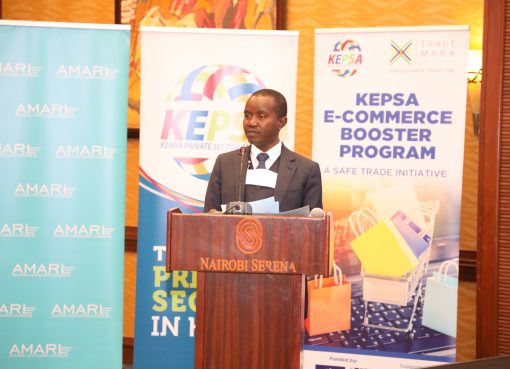The Kenya Smart Agriculture Project (KCSAP) in partnership with the West Pokot County Government has donated 1,095 hybrid Galla goats to 600 farmers in 18 farmers’ Common Interest Groups (CIG) to help them improve their animal breed.
West Pokot Governor Prof. John Lonyangapuo donated hybrid Galla goats at the Nasukuta Export Abattoir compound in the Cheparerea area within West Pokot County, as part of the government agenda of continuous improvement of breeding of cattle, goats and sheep in the region and its commitment to help farmers earn more money from their livestock farming.
“This is part of the Government of Kenya (GOK) resilience program dubbed the Kenya Smart Agriculture Project (KCSAP) and which in partnership with the county government aims at improving the breeding of cattle, goats, sheep in the region to earn farmers more money from their livestock in the competitive livestock market,” West Pokot Governor Prof. John Lonyangapuo noted.
Governor Lonyangapuo together with the County Agriculture Executive for Pastoral Economy, Agriculture, and Irrigation Geoffrey Lipale together with Samson Nyangaluk, Chief Officer, Pastoral Economy and the West Pokot project coordinator of the Kenya Smart Agriculture Project Philip Tingáa while presiding over the donation exercise lauded the progress of the program saying it will address animal breed, food security and improve livelihoods.
He noted that farmers from Alale, Sekerr, Endugh, Sook, and Lomut wards who are allied to 18 farmers’ Common Interest Groups (CIG) received 1095 hybrid goats consisting of 200 does and 895 bucks to breed.
Prof Lonyangapuo noted that the Galla goats’ project is one of the agriculture values chains programs that the national government and West Pokot devolved unit implemented through the Kenya Climate-Smart Agriculture Project aimed at increasing agricultural productivity and profitability in the region.
The governor pointed out that the Galla goat matures and attain market weight at around six months quicker than the local breed which takes one year for a farmer to get cash.
He encouraged farmers to engage in more climate-smart activities that will enable them get cash to cater for their families.
“Much progress has been made in reducing hunger and poverty and improving food security and nutrition but I want to encourage all farmers that you engage yourselves in climate-smart activities that will help provide a source of food, income, and employment and in the process improve your standards of living,” Lonyangapuo emphasized.
On his part, Lipale lauded KCSAP project noting that it has helped address agricultural productivity and build resilience to climate change risks in the targeted smallholder farming and pastoral communities in the county and in the event of the eligible crisis or emergency it has provided an immediate and effective response to the residents.
The KCSAP County Coordinator warned the groups not to sell or slaughter the Galla goats, saying they are meant for breeding purposes only as `seed’.
“The distributions have been in phases and we are in phase three (3) of the project and so far 2991 Galla goats and 793 sheep have been distributed to farmers for breeding purposes with mature offspring’s of the improved breeds sold at Sh6,000 compared to the local smaller breeds that fetch Sh3,000,” West Pokot KCSAP project Coordinator, Mr.Ting’aa told the press.
Moses Mnangát a beneficiary lauded the project, saying the rare and resilient Galla goats are able to survive drought, yield more milk and have a higher resistance to opportunistic diseases that eliminate local goats due to weak immunity.
Loice Chepkemoi said the Galla goat will help improve their livelihoods since the breed matures faster and attract good prices in a competitive market.
The goats were bought from Wajir County from the farmers who breed them and all the goats were vaccinated against diseases before they were donated to farmers for breeding.
Lonyangapuo reiterated his administration’s commitment to achieving the goal of building resilience, improving peace and stability as well as food security and livelihoods of the residents in the region.
By Anthony Melly





